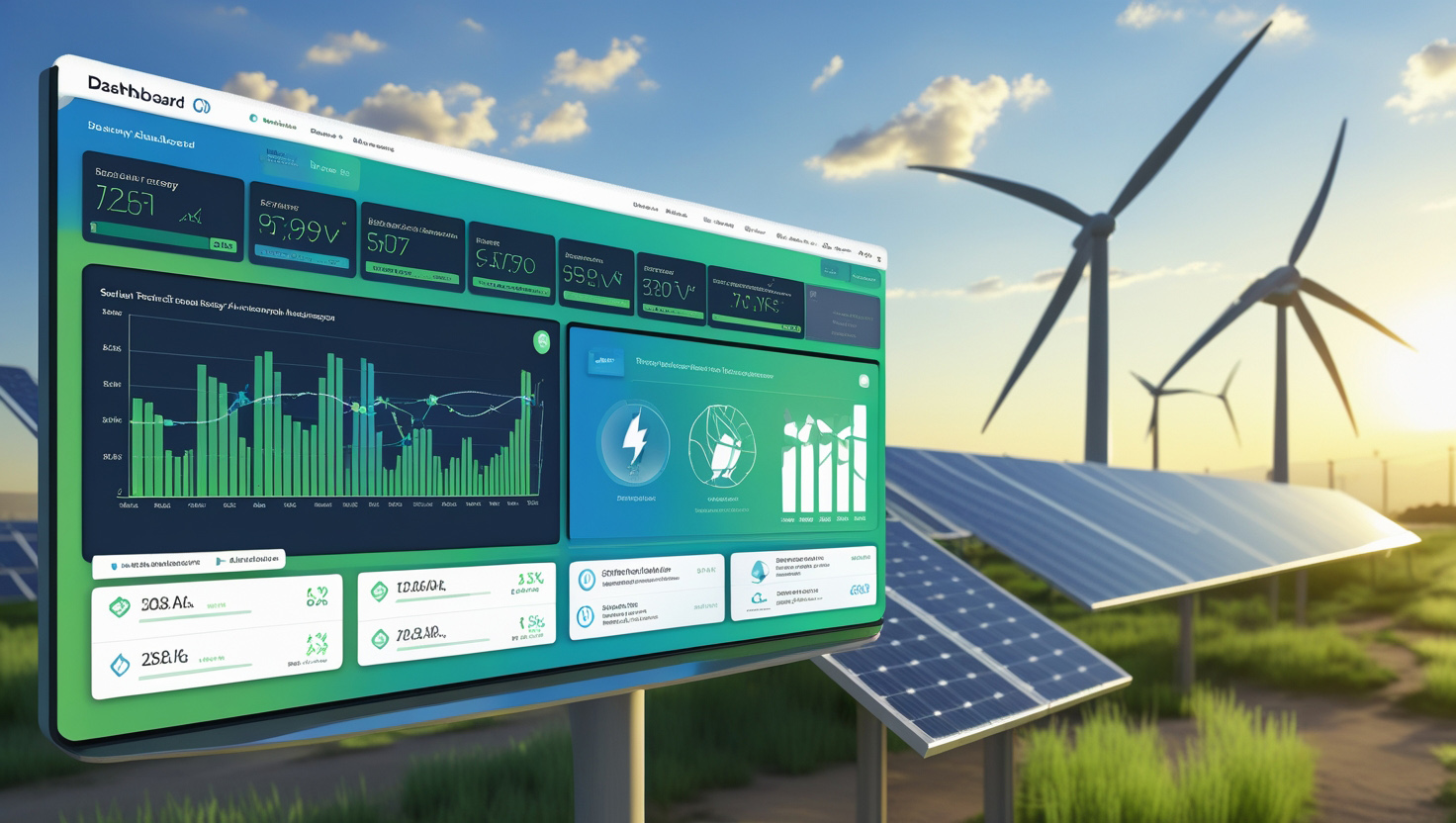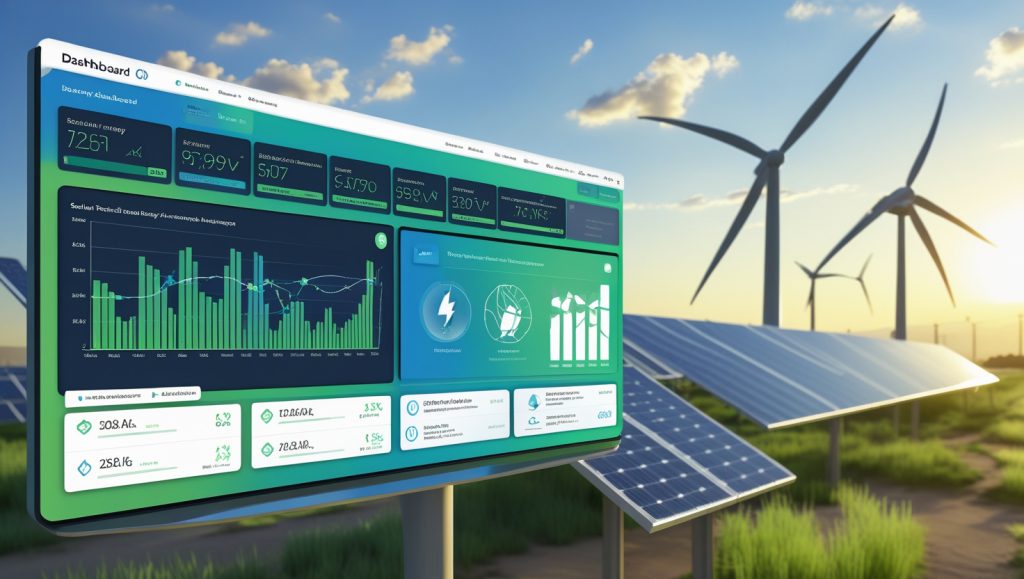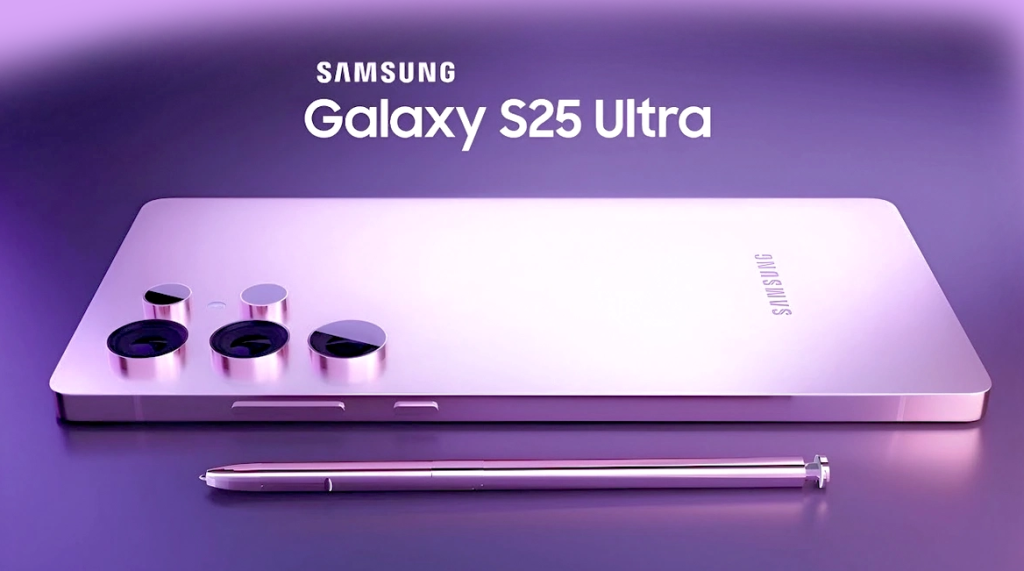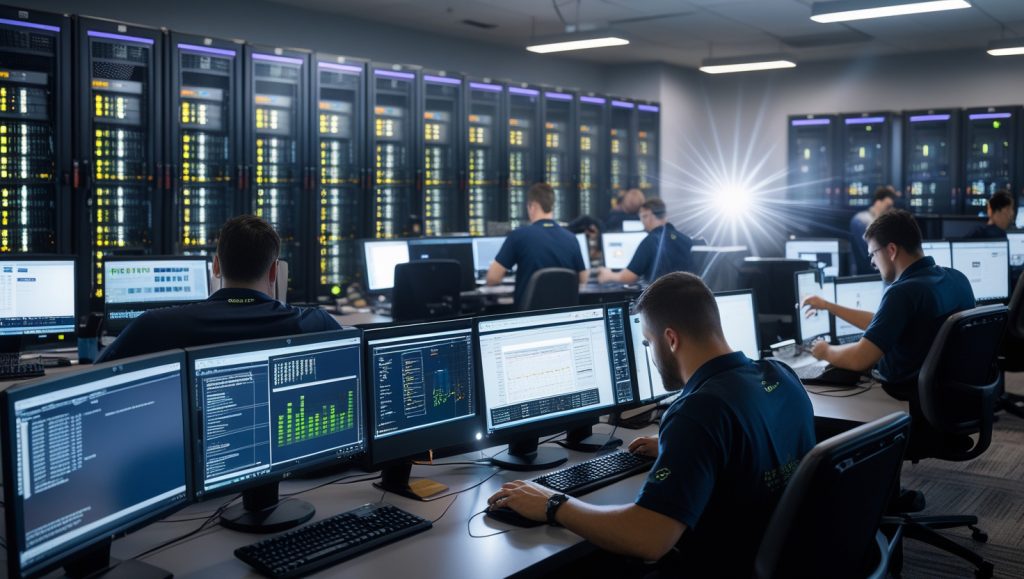The renewable energy sector is experiencing rapid growth as the world transitions toward cleaner, more sustainable energy sources. To manage this growth effectively, companies in the renewable energy sector increasingly rely on renewable energy asset management software. This advanced technology plays a pivotal role in ensuring operational efficiency, optimizing asset performance, and meeting the evolving demands of the energy industry.
Table of Contents
What is Renewable Energy Asset Management Software?
This software combines data analytics, artificial intelligence (AI), and Internet of Things (IoT) technologies to provide real-time insights into asset performance, streamline operations, and maximize return on investment (ROI).
By integrating renewable energy asset management software, companies can address challenges such as inefficiencies, equipment downtime, and regulatory compliance, while ensuring their assets operate at peak performance.
Examples of renewable energy asset management software widely used in the industry
1. Power Factors
- Overview: Power Factors provides cloud-based asset performance management software for renewable energy assets, including wind, solar, and energy storage systems.
- Features:
- Performance monitoring and analytics
- Asset optimization
- Maintenance management
- Reporting and compliance tools
2. 3megawatt (BluePoint)
- Overview: BluePoint by 3megawatt specializes in renewable energy asset management for portfolio management, including financial and operational tasks.
- Features:
- Contract and compliance management
- Financial reporting and analytics
- Document storage and workflow automation
- Portfolio management for wind, solar, and energy storage
3. Kisters Renewable Asset Management
- Overview: A comprehensive tool for monitoring and managing renewable energy assets, focusing on maximizing efficiency and uptime.
- Features:
- SCADA integration
- Data visualization and analysis
- Maintenance scheduling
- KPI monitoring and reporting
4. Inaccess
- Overview: Inaccess provides software solutions for managing large-scale solar, wind, and battery energy storage projects.
- Features:
- Centralized monitoring and control
- Fault detection and diagnosis
- Advanced analytics for asset performance
- Integration with IoT and SCADA systems
5. EnergyHub
- Overview: Focuses on distributed energy resources, including solar and battery storage. It is widely used by utilities and renewable energy operators.
- Features:
- DER (Distributed Energy Resource) management
- Forecasting and load balancing
- Real-time data analytics
- Customer engagement tools
6. Alectris ACTIS
- Overview: ACTIS provides end-to-end asset management software designed for renewable energy plants, particularly solar power plants.
- Features:
- O&M management (operations and maintenance)
- Real-time performance monitoring
- Workflow automation
- Financial and technical reporting
7. PEAK by Greenbyte
- Overview: Greenbyte PEAK specializes in optimizing energy production for renewable energy assets, including wind, solar, and hydro.
- Features:
- Production forecasting
- Real-time monitoring
- Advanced analytics
- Energy portfolio management
- Production forecasting
8. PowerHub
- Overview: A software designed for renewable energy professionals to streamline asset management processes.
- Features:
- Financial tracking
- Document management
- Performance monitoring
- Reporting and insights
These tools are used by renewable energy asset managers, operators, and investors to streamline operations, increase efficiency, and maximize energy production from their renewable energy assets.
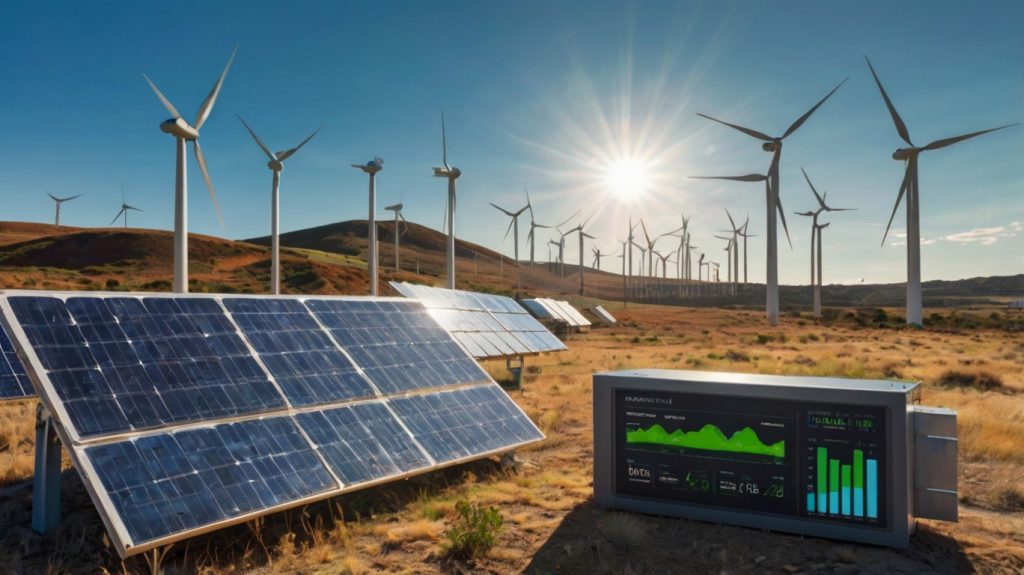
The Need for Asset Management in Renewable Energy
The global shift toward renewable energy has led to an exponential increase in solar farms, wind farms, and other renewable energy installations. With this growth comes the challenge of managing vast networks of assets spread across multiple locations. Traditional methods of asset management, such as manual inspections and spreadsheets, are no longer sufficient.
Renewable energy asset management software offers a comprehensive solution by:
- Centralizing Data: It consolidates data from various energy assets into a unified platform for easy monitoring and analysis.
- Improving Efficiency: Automated tools reduce human intervention and minimize errors.
- Enhancing Decision-Making: Real-time data and predictive analytics help managers make informed decisions.
- Reducing Operational Costs: Proactive maintenance and efficient resource allocation lead to significant cost savings.
- Ensuring Regulatory Compliance: The software helps businesses stay compliant with government regulations and industry standards.

Key Features of Renewable Energy Asset Management Software
To fully understand the benefits of renewable energy asset management software, it’s essential to explore its key features:
- Real-Time Monitoring Advanced monitoring systems track the performance of renewable energy assets in real time, providing crucial data on energy output, efficiency, and potential issues. This enables quick responses to equipment malfunctions or deviations in energy production.
- Predictive Maintenance Predictive maintenance powered by AI and machine learning predicts equipment failures before they occur. This proactive approach reduces downtime and extends the lifespan of renewable energy assets.
- Data Analytics and Reporting Renewable energy asset management software provides in-depth analytics and customizable reports, enabling stakeholders to evaluate performance trends, identify inefficiencies, and optimize operations.
- Integration with IoT Devices IoT devices, such as sensors and smart meters, play a critical role in asset management by collecting and transmitting data to the software. Integration with IoT ensures accurate, real-time information.
- Scalability Modern software solutions are scalable, allowing businesses to manage assets of varying sizes, from small solar farms to large-scale wind power plants.
- Regulatory Compliance Management Keeping up with changing regulations can be daunting. Renewable energy asset management software simplifies compliance by automating reporting and ensuring adherence to legal requirements.
Benefits of Using Renewable Energy Asset Management Software
The adoption of renewable energy asset management software offers numerous advantages:
- Maximized Energy Production By optimizing the performance of renewable energy assets, the software ensures maximum energy output, enhancing overall efficiency.
- Cost Savings Proactive maintenance and streamlined operations lead to significant reductions in operational and maintenance costs.
- Enhanced Asset Longevity Regular monitoring and predictive maintenance extend the lifespan of renewable energy assets, delaying the need for costly replacements.
- Improved Sustainability Efficient asset management minimizes energy waste and environmental impact, aligning with global sustainability goals.
- Better ROI The software helps businesses achieve higher returns on their renewable energy investments by reducing downtime and optimizing asset performance.
- Simplified Management With centralized data and automated workflows, managing renewable energy assets becomes more straightforward and efficient.
Industry Applications of Renewable Energy Asset Management Software
The versatility of renewable energy asset management software makes it suitable for various applications, including:
- Solar Energy Managing solar farms involves tracking energy production, monitoring panel health, and optimizing placement. Asset management software simplifies these tasks by providing real-time data and analytics.
- Wind Energy Wind farms require continuous monitoring of turbine performance, wind speed, and energy output. The software’s predictive maintenance capabilities are particularly beneficial for reducing downtime and preventing costly repairs.
- Hydropower Hydroelectric plants benefit from asset management software by optimizing water flow, monitoring equipment, and ensuring compliance with environmental regulations.
- Energy Storage Systems Battery storage systems play a crucial role in renewable energy. Asset management software ensures efficient charging and discharging cycles while monitoring battery health and capacity.
Challenges in Implementing Renewable Energy Asset Management Software
While the benefits are clear, implementing renewable energy asset management software can pose challenges, such as:
- High Initial Costs The upfront investment in software, hardware, and training can be significant. However, the long-term benefits often outweigh these costs.
- Data Security Concerns As the software relies on vast amounts of data, ensuring cybersecurity is a priority to prevent unauthorized access and data breaches.
- Integration with Existing Systems Compatibility with existing infrastructure can be a challenge, requiring careful planning and customization.
- Resistance to Change Transitioning from traditional methods to advanced software may face resistance from employees and stakeholders.
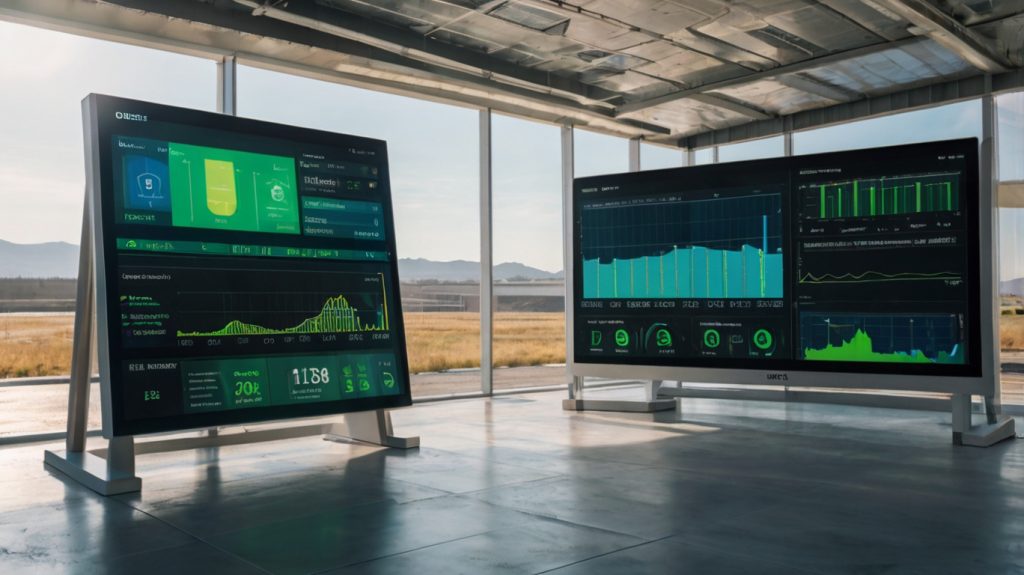
Future Trends in Renewable Energy Asset Management Software
The renewable energy sector continues to evolve, and so does the technology supporting it. Emerging trends in renewable energy asset management software include:
- AI and Machine Learning AI-driven analytics will play an even greater role in optimizing asset performance and predicting maintenance needs.
- Blockchain for Energy Transactions Blockchain technology can enable secure and transparent energy trading, enhancing the functionality of asset management software.
- Enhanced IoT Integration The integration of advanced IoT devices will improve data accuracy and enable more sophisticated asset management.
- Cloud-Based Solutions Cloud-based software offers scalability, remote access, and cost efficiency, making it an attractive option for businesses.
- Sustainability Metrics Future software solutions will include advanced tools for measuring and reporting sustainability metrics, helping companies achieve their environmental goals.
Conclusion
Renewable energy asset management software is a game-changer in the clean energy sector. By offering advanced tools for monitoring, optimizing, and maintaining renewable energy assets, it empowers businesses to maximize efficiency, reduce costs, and contribute to a sustainable future. As the demand for renewable energy continues to grow, investing in robust asset management solutions will be critical for staying competitive and achieving long-term success.
By integrating renewable energy asset management software into their operations, companies can unlock the full potential of their renewable energy assets, driving the transition toward a cleaner, greener future.

